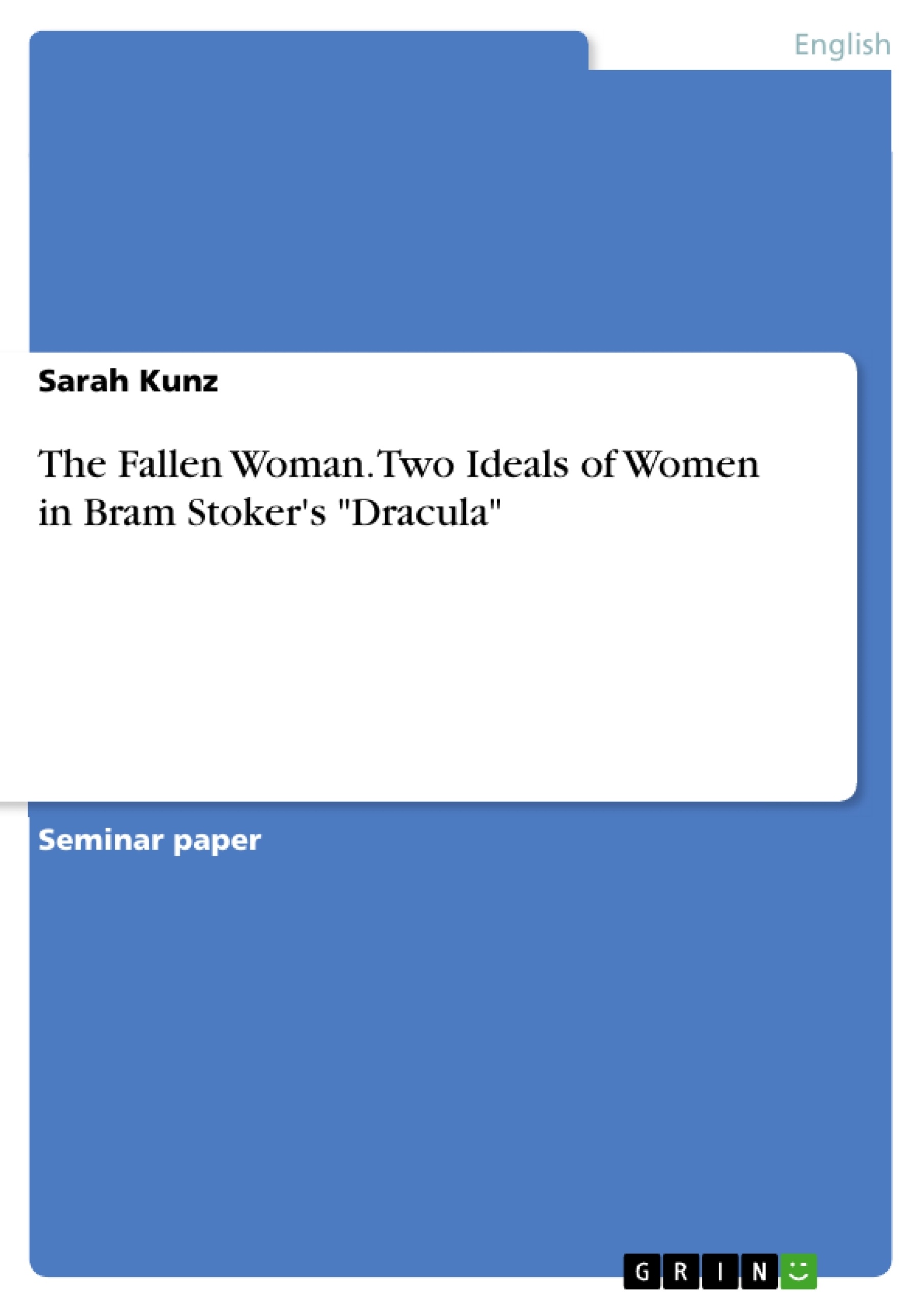In the novel entitled Dracula, written by Bram Stoker in 1897, the two female characters Lucy Westenra and Mina Harker both seem to represent the Victorian ideal of female virtue. However, as the narrative proceeds, vampirism, brought upon society by Count Dracula, challenges those concepts. After being turned into a vampire, Lucy converts into an openly sexual predator, whereas Mina transforms into a „New Woman“. While Mina can be saved in the end, Lucy has to die at her lover’s hand in order to return to that innocent state of purity. The differences between the two friends get evoked throughout the novel and show two different types of women; one who is worth saving and one who is not because it threatens Victorian ideals.
Table of Contents
- Two Ideals of Women in Bram Stoker's Dracula
- Victorian Society and the Ideal of Woman
- Lucy Westenra's Transformation
- Lucy as a Vampire Vixen
- Mina Harker's Transformation
- Mina as the "New Woman"
Objectives and Key Themes
This essay analyzes the representation of women in Bram Stoker's Dracula, focusing on the characters of Lucy Westenra and Mina Harker. It explores how their transformations, influenced by vampirism, challenge the Victorian ideal of female virtue and offer alternative perspectives on women's roles and desires within a patriarchal society.
- Victorian Ideals of Womanhood
- Transformation of Female Characters through Vampirism
- Challenging Traditional Gender Roles and Expectations
- The Emergence of the "New Woman"
- Sexual Liberation and Its Consequences
Chapter Summaries
The essay begins by exploring the Victorian societal norms and expectations placed upon women, highlighting the emphasis on purity, submissiveness, and domesticity. It then delves into Lucy Westenra's portrayal, analyzing her transformation from a seemingly innocent and pure woman to a sexually liberated vampire. The chapter examines the implications of her transformation for Victorian society and explores the consequences of her transgressive desires.
The essay continues by focusing on Mina Harker's transformation, contrasting her journey with Lucy's. Mina, initially embodying the ideal Victorian woman, undergoes a gradual change, becoming more independent and assertive as she fights against Dracula's influence. The chapter examines the implications of her transformation, exploring the concept of the "New Woman" and its potential threat to traditional gender roles.
Keywords
This analysis delves into the themes of Victorian society, gender roles, female sexuality, vampirism, transformation, "New Woman," Dracula, Lucy Westenra, and Mina Harker.
- Citation du texte
- Sarah Kunz (Auteur), 2016, The Fallen Woman. Two Ideals of Women in Bram Stoker's "Dracula", Munich, GRIN Verlag, https://www.grin.com/document/368595



